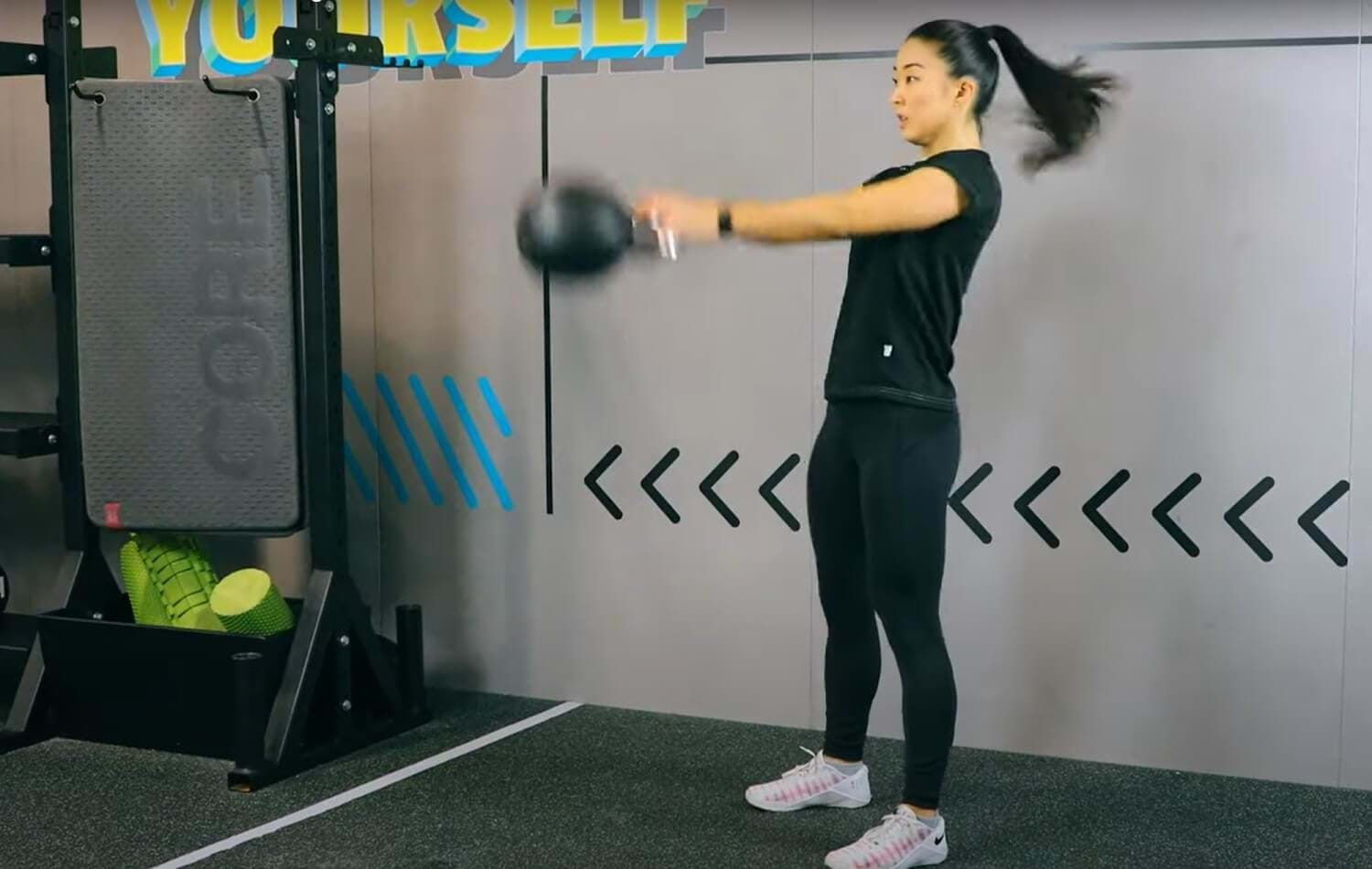One Arm Kettlebell Swings
What are One Arm Kettlebell Swings?

One arm kettlebell swings are a dynamic unilateral exercise that combines strength training with cardio to work the posterior chain muscles, including the glutes, hamstrings, and lower back, with some core, shoulder, and arm activation. The movement comes from an explosive hip hinge, which helps build strength and muscle in the glutes and boosts power output.
Compared to traditional kettle bell swings, the single arm variation adds an anti-rotational challenge which can further improve stability and address muscular imbalances. Unilateral kettlebell swings are great for building full body strength, muscular endurance, and aerobic fitness.
One arm kettlebell swings work great as part of any gym cardio sessions, full-body workouts, or with back exercises. Learn good one arm kettlebell swing technique with our tips and demo video below.
One arm kettlebell swings are more advanced than the traditional two handed kettlebell swing, so we'd recommend starting with this variation. Once you're happy with the technique and muscle engagement, try one arm swings using a light kettlebell first.
Check out our other kettlebell exercises: Two Handed Kettlebell Swing, Overhead Kettlebell Swing
Commonly Asked Questions About One Arm Kettlebell Swings
Yes, one arm kettlebell swings are a good addition to any workout routine. They help to build full body strength and boost cardio fitness while improving power, coordination, and stability. The single arm variation puts more demand on the smaller stabilising muscles in your shoulders, core, and obliques and can help address muscle imbalances between the two sides.
Single arm kettlebell swings are a full body exercise - they work the muscles of the posterior chain, including the glutes, hamstrings, and lower back. They also engage the core muscles, especially the obliques. The shoulder, arm, and grip of the working side are involved, while the lats and upper back muscles work to stabilise the shoulder.
Both single and double kettlebell swings have benefits, and the choice depends on your goals. Single arm swings are better for targeting muscle imbalances, working core stability, and rotational control. Double kettlebell swings allow you to use a heavier kettlebell, which could lead to more strength and power.
The weight you use for a single arm kettlebell swing depends on your strength and experience level, however the focus of one arm kettlebell swings is less on how much weight you use, and more on how you engage and stabilise your muscles. Start by mastering your technique with a light kettlebell, and then as you get stronger you can increase the weight.
One Arm Kettlebell Swing Tips
- Keep your core engaged throughout the entire exercise.
- Focus on hinging at the hips, rather than bending at the knees.
- Keep your arm straight but not locked out throughout the movement.
- Allow the arm that is not holding the kettlebell to naturally swing behind you.
How To Do A One Arm Kettlebell Swing
Stand with your feet hip width or slightly wider.
Squat down and take hold of the kettlebell with one hand, palm facing back.
As you stand up, allow the kettlebell to swing back in between your legs.
Squeeze the glutes and keep the arm straight as the power from your hips swings the kettlebell to chest height.
When it reaches chest height, swap hands, taking hold of the kettlebell with the other hand at the top of the movement.
Allow the kettlebell to swing back between your legs as you hinge at the hips.
Continue your reps, switching arms at the top of each movement.
If you’re not sure if any of the above exercises are suitable for you, please consult your doctor before you start it. Need guidance on how to perform the exercise? Ask a personal trainer at your gym.